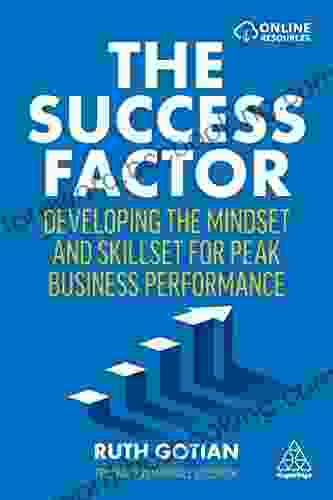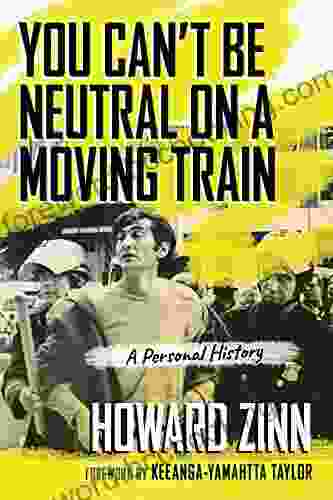Mastering the Art of Flexible Work: An In-Depth Review of the HBR Guide to Managing Flexible Work

4.6 out of 5
| Language | : | English |
| File size | : | 4734 KB |
| Text-to-Speech | : | Enabled |
| Screen Reader | : | Supported |
| Enhanced typesetting | : | Enabled |
| Word Wise | : | Enabled |
| Print length | : | 184 pages |
In today's rapidly evolving business landscape, characterized by technological advancements and a global pandemic, flexible work arrangements have become increasingly prevalent. Organizations worldwide are recognizing the numerous benefits of offering flexibility to their employees, including increased productivity, employee engagement, and work-life balance.
To help navigate this transformative era, the Harvard Business Review (HBR) has released a comprehensive guide titled "HBR Guide to Managing Flexible Work." This invaluable resource provides practical and actionable advice for leaders and managers on how to successfully implement and manage flexible work programs in their organizations.
In this in-depth review, we will delve into the key insights, strategies, and best practices outlined in the HBR Guide to Managing Flexible Work. Whether you are a seasoned HR professional, a team leader, or an individual seeking to enhance your work flexibility, this guide will empower you to create and sustain a thriving flexible work environment.
Chapter 1: The Business Case for Flexible Work
The opening chapter of the HBR Guide to Managing Flexible Work establishes a compelling business case for adopting flexible work arrangements. The authors present convincing evidence that flexible work can lead to significant improvements in employee productivity, innovation, and overall business performance.
They cite studies demonstrating that employees who have the flexibility to manage their work-life balance are more engaged, less likely to experience burnout, and ultimately more productive. By reducing commute times and providing employees with greater control over their schedules, flexible work arrangements can free up valuable time and allow employees to focus on high-priority tasks during their most productive hours.
The authors also emphasize the role of flexibility in attracting and retaining top talent. In today's competitive job market, job seekers are increasingly seeking out employers who offer flexible work options. By embracing flexibility, organizations can position themselves as employers of choice and gain a competitive advantage in attracting and retaining exceptional individuals.
Chapter 2: Building a Flexible Work Culture
The second chapter of the HBR Guide to Managing Flexible Work delves into the essential elements of building a flexible work culture. The authors emphasize the importance of creating a trusting and supportive work environment where employees feel empowered to manage their work and personal lives effectively.
They outline key strategies for fostering a culture of trust, such as:
- Establishing clear expectations and roles.
- Providing regular feedback and support.
- Empowering employees with decision-making authority.
The authors also discuss the significance of technology in enabling flexible work arrangements. They highlight the role of collaboration tools, video conferencing platforms, and cloud-based applications in facilitating seamless communication and collaboration among remote and distributed teams.
Chapter 3: Managing Flexible Work Arrangements
Chapter 3 of the HBR Guide to Managing Flexible Work provides practical guidance on how to effectively manage flexible work arrangements. The authors cover various types of flexible work arrangements, including remote work, hybrid work, and compressed workweeks, and offer best practices for managing each type effectively.
They emphasize the importance of establishing clear communication channels, setting boundaries to prevent work-life overlap, and providing appropriate training and support for employees working remotely.
The authors also address potential challenges associated with managing flexible work arrangements, such as concerns over productivity, collaboration, and employee well-being. They offer practical solutions to mitigate these challenges and ensure the success of flexible work programs.
Chapter 4: Leading Flexible Teams
The fourth chapter of the HBR Guide to Managing Flexible Work focuses on the role of leadership in creating and sustaining a thriving flexible work environment. The authors emphasize the importance of setting clear expectations, providing ongoing support, and fostering a sense of belonging among remote and distributed teams.
They outline key leadership principles for managing flexible teams, such as:
- Creating a vision for the flexible work environment.
- Empowering team members to manage their work.
- Building a strong team culture that values diversity and inclusion.
The authors also provide guidance on how to address common challenges faced by leaders of flexible teams, such as managing performance remotely, fostering collaboration, and ensuring equitable opportunities for all team members.
Chapter 5: Measuring the Success of Flexible Work
The final chapter of the HBR Guide to Managing Flexible Work discusses the importance of measuring the success of flexible work programs. The authors provide a framework for evaluating the effectiveness of flexible work arrangements based on key performance indicators, such as productivity, employee engagement, and customer satisfaction.
They emphasize the need for a data-driven approach to assessing the impact of flexible work and offer guidance on how to collect and analyze relevant metrics. By regularly evaluating the success of their flexible work programs, organizations can make informed decisions about how to improve and adjust these programs over time.
The HBR Guide to Managing Flexible Work is an indispensable resource for organizations and individuals seeking to navigate the challenges and opportunities of the evolving world of work. It provides a comprehensive and practical roadmap for creating, implementing, and sustaining successful flexible work arrangements that empower employees, enhance productivity, and drive business success.
Whether you are a seasoned HR professional, a team leader, or an individual seeking greater work-life flexibility, this guide will equip you with the knowledge and tools needed to thrive in a post-pandemic world.
Embrace the insights and best practices outlined in the HBR Guide to Managing Flexible Work and unlock the transformative potential of flexible work for your organization and your career.
Free Download your copy of the HBR Guide to Managing Flexible Work today and start reaping the benefits of a more flexible, productive, and fulfilling work environment.
Image Alt Attributes:
- HBR Guide to Managing Flexible Work book cover: A professional-looking man and woman working together remotely, with a laptop, tablet, and smartphone on their desks.
- Productivity graph: A line graph showing a steady increase in productivity levels.
- Employee engagement pie chart: A pie chart representing different levels of employee engagement, with a large section labeled "Highly Engaged."
- Flexible work team photo: A group of diverse professionals working together in a modern office setting, with one person working remotely via video conferencing.
- Data analysis chart: A bar graph showing the impact of flexible work arrangements on key performance indicators.
4.6 out of 5
| Language | : | English |
| File size | : | 4734 KB |
| Text-to-Speech | : | Enabled |
| Screen Reader | : | Supported |
| Enhanced typesetting | : | Enabled |
| Word Wise | : | Enabled |
| Print length | : | 184 pages |
Do you want to contribute by writing guest posts on this blog?
Please contact us and send us a resume of previous articles that you have written.
 Book
Book Novel
Novel Page
Page Chapter
Chapter Text
Text Story
Story Genre
Genre Reader
Reader Library
Library Paperback
Paperback E-book
E-book Magazine
Magazine Newspaper
Newspaper Paragraph
Paragraph Sentence
Sentence Bookmark
Bookmark Shelf
Shelf Glossary
Glossary Bibliography
Bibliography Foreword
Foreword Preface
Preface Synopsis
Synopsis Annotation
Annotation Footnote
Footnote Manuscript
Manuscript Scroll
Scroll Codex
Codex Tome
Tome Bestseller
Bestseller Classics
Classics Library card
Library card Narrative
Narrative Biography
Biography Autobiography
Autobiography Memoir
Memoir Reference
Reference Encyclopedia
Encyclopedia Stephen Brown
Stephen Brown Hayley Mills
Hayley Mills Robert M Steward
Robert M Steward Herbert B Mayo
Herbert B Mayo Helen Barry Siragusa
Helen Barry Siragusa Hester Applebee
Hester Applebee Holly Bridges
Holly Bridges Travis Breeding
Travis Breeding Henry Adams
Henry Adams Jonathan E Steinhart
Jonathan E Steinhart Liza Gardner Walsh
Liza Gardner Walsh Raul Caceres M D
Raul Caceres M D Jennifer Maruno
Jennifer Maruno Homer Hickam
Homer Hickam Isak Dinesen
Isak Dinesen Leslie Stager
Leslie Stager Herbert Warren Wind
Herbert Warren Wind Libby Mcdonald
Libby Mcdonald Helen E Johnson
Helen E Johnson Helen Cooper
Helen Cooper
Light bulbAdvertise smarter! Our strategic ad space ensures maximum exposure. Reserve your spot today!

 Jerome PowellUncover the Hidden Legacy of the 1977 Chicago Public Library Fire in "What...
Jerome PowellUncover the Hidden Legacy of the 1977 Chicago Public Library Fire in "What...
 Darren NelsonOr Is It What Makes Dinosaur Dinosaur? A Must-Read for Dinosaur Enthusiasts...
Darren NelsonOr Is It What Makes Dinosaur Dinosaur? A Must-Read for Dinosaur Enthusiasts...
 Jaylen MitchellPhilosopher and Oracle Women in Antiquity: Uncovering the Secrets of Ancient...
Jaylen MitchellPhilosopher and Oracle Women in Antiquity: Uncovering the Secrets of Ancient...
 Kyle PowellUnleash the Blade of Immortality: Immerse Yourself in Blade of the Immortal...
Kyle PowellUnleash the Blade of Immortality: Immerse Yourself in Blade of the Immortal... Theodore MitchellFollow ·3.8k
Theodore MitchellFollow ·3.8k Anton FosterFollow ·19k
Anton FosterFollow ·19k John UpdikeFollow ·12.6k
John UpdikeFollow ·12.6k Reed MitchellFollow ·18.6k
Reed MitchellFollow ·18.6k Everett BellFollow ·7.1k
Everett BellFollow ·7.1k Adam HayesFollow ·9.9k
Adam HayesFollow ·9.9k Alexander BlairFollow ·3.1k
Alexander BlairFollow ·3.1k Corey GreenFollow ·12.4k
Corey GreenFollow ·12.4k

 Fabian Mitchell
Fabian MitchellUnleash the Adventure: Family Fun in the Black Hills
Nestled amidst the rolling hills...

 Alfred Ross
Alfred RossUnleashing Peak Business Performance: A Journey of...
In today's rapidly evolving business...

 Fernando Bell
Fernando BellEmbrace the Prophetic Voice of Howard Zinn: A Journey...
As we navigate the complexities of our...

 Jonathan Franzen
Jonathan FranzenChildren of the Arctic: A Literary Expedition to the...
In the annals of...

 Branson Carter
Branson CarterYou Can Be Neutral on a Moving Train: A Transformative...
Welcome, dear reader,...
4.6 out of 5
| Language | : | English |
| File size | : | 4734 KB |
| Text-to-Speech | : | Enabled |
| Screen Reader | : | Supported |
| Enhanced typesetting | : | Enabled |
| Word Wise | : | Enabled |
| Print length | : | 184 pages |






